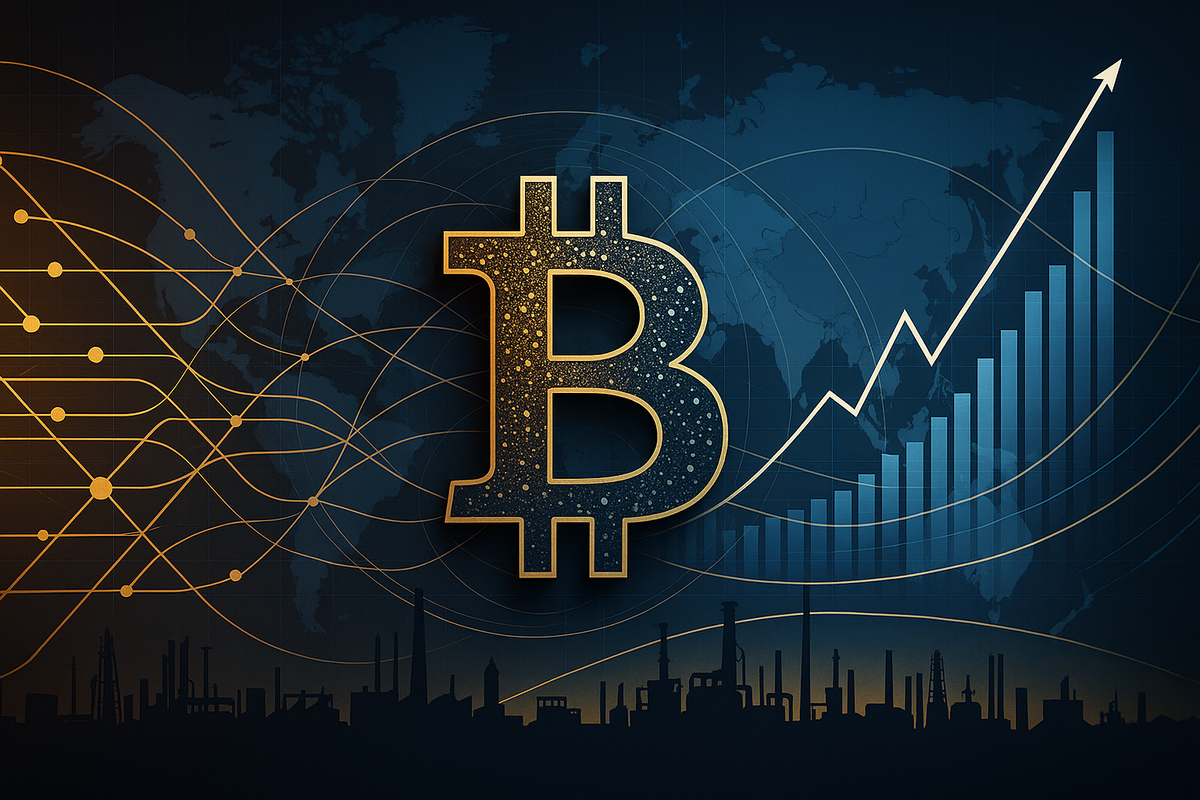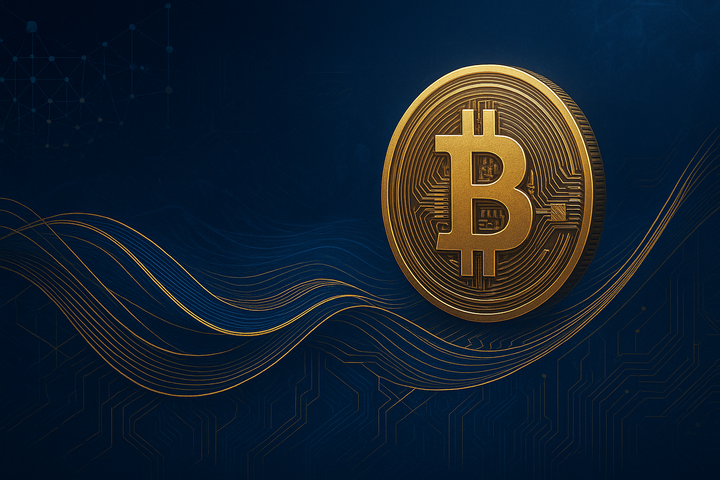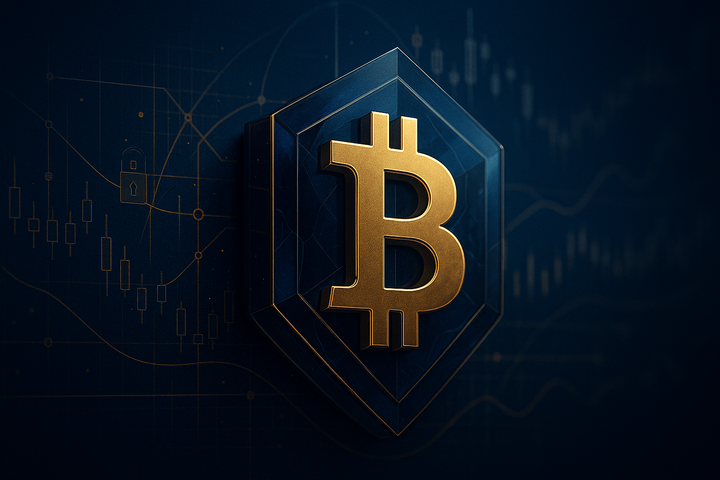Bitcoin, Tariffs, and the Twin-Deficit Stress Test
The April 29 2025 episode of the Robin Seyr Podcast features Steven Lubka arguing that tariff escalation, treasury-market strain, and America’s twin deficits are accelerating Bitcoin’s rise as a neutral reserve asset.

- My 'briefing notes' summarize the content of podcast episodes; they do not reflect my own views.
- They contain (1) a summary of podcast content, (2) potential information gaps, and (3) some speculative views on wider Bitcoin implications.
- Pay attention to broadcast dates (I often summarize older episodes)
- Some episodes I summarize may be sponsored: don't trust, verify, if the information you are looking for is to be used for decision-making.
Summary
The April 29 2025 episode of the Robin Seyr Podcast features Steven Lubka arguing that tariff escalation, treasury-market strain, and America’s twin deficits are accelerating Bitcoin’s rise as a neutral reserve asset. He contends Triffin’s dilemma forces chronic U.S. trade and fiscal gaps that erode middle-class prosperity and invite monetary upheaval. Lubka predicts Federal Reserve liquidity support and potential U.S. Treasury Bitcoin accumulation, making 2025 a turning point for the global monetary order.
Take-Home Messages
- Safe-Haven Performance: Bitcoin’s smaller drawdown than equities during a record S&P crash signals genuine defensive demand.
- Twin-Deficit Risk: Perpetual dollar oversupply drives trade and fiscal gaps, hollowing domestic industry and widening wealth divides.
- Tariff Leverage: Washington plans to swap lower duties for allied factory construction, tying industrial policy to monetary sovereignty.
- Liquidity Watch: Widening treasury spreads could trigger emergency Fed easing, debasing dollars and reinforcing Bitcoin’s hedge appeal.
- Sovereign Accumulation: Lubka sees high odds of U.S. reserve purchases, a move that would mainstream Bitcoin across central-bank balance sheets.
Overview
Steven Lubka opens by noting that Bitcoin fell roughly one-quarter while the S&P shed twenty percent in three days, calling this resilience the first real proof of Bitcoin's safe-haven behavior. He says investors now view Bitcoin less as a high-beta tech proxy and more as an uncorrelated store of value. This perception shift, he argues, rewrites institutional risk models.
He traces the root problem to Triffin’s dilemma, which forces the United States to oversupply dollars and run chronic trade and fiscal deficits. These “twin deficits” push asset inflation that benefits finance and tech while eroding middle-class purchasing power. The widening gap fuels political support for tariffs and re-industrialization.
Tariffs on Chinese goods and threatened duties on allies are portrayed as bargaining chips to force foreign direct investment in U.S. factories. Lubka expects Japan and the EU to accept lower tariffs in exchange for semiconductor and pharmaceutical plants on American soil. He warns, however, that poorly calibrated levies could fracture supply chains and roil markets.
Treasury-market stress is the near-term flashpoint: short–long spread blowouts hint at liquidity fractures that may compel weekend Federal Reserve action. Lubka believes any emergency easing would inflate dollars, spur global search for neutral assets, and pull capital into Bitcoin. He concludes that sovereign adoption is suddenly plausible, with Bitcoin and gold sharing future reserve duties.
Stakeholder Perspectives
- U.S. Policymakers: Balance industrial reshoring with reserve-currency responsibilities while averting market panic.
- Central Banks: Monitor treasury plumbing and evaluate neutral reserves such as Bitcoin to hedge dollar exposure.
- Institutional Investors: Reprice portfolios as Bitcoin’s equity correlation weakens and safe-haven thesis gains traction.
- Manufacturing Multinationals: Weigh tariff costs against incentives to build American plants and secure market access.
- Middle-Class Households: Support job-creating factories but fear retirement losses if equities stay volatile.
- Bitcoin Industry: Anticipates regulatory clarity and liquidity influx if sovereign entities begin accumulating coins.
Implications and Future Outlook
Re-industrialization tied to tariff negotiations could revive U.S. manufacturing wages while raising global production costs. If these deals succeed, Bitcoin-funded miners may cluster near new factories, linking energy demand to both industrial and blockchain loads. Policymakers must coordinate energy planning to avoid local bottlenecks.
Federal Reserve liquidity support would buffer equity markets but erode real dollar value, reinforcing Bitcoin’s hedge narrative. Sustained easing could push institutional allocators to treat Bitcoin as strategic collateral alongside gold and Treasury bills. This portfolio reweighting would deepen market liquidity and spur derivative growth.
Should the U.S. Treasury acquire Bitcoin, international bodies such as the IMF may revisit reserve frameworks that currently exclude decentralized assets. Allies could follow suit to maintain competitive parity, widening the pool of sovereign Bitcoin demand. The resulting multipolar reserve system would challenge traditional fiat dominance and reshape exchange-rate diplomacy.
Some Key Information Gaps
- What legal and operational frameworks would enable the U.S. Treasury to hold Bitcoin on-balance-sheet? Clear governance and custody rules are essential before sovereign adoption can scale.
- Which fiscal or trade policies could realistically resolve Triffin’s dilemma without destabilizing global finance? Viable solutions would recalibrate dollar supply while safeguarding international liquidity.
- What statistical models best detect regime shifts in Bitcoin–equity correlations? Early warnings guide portfolio hedging and systemic-risk oversight.
- To what extent does yuan devaluation directly translate into Bitcoin inflows today? Quantifying this link informs capital-control and market-liquidity planning.
- How sustainable is Bitcoin’s safe-haven performance during prolonged equity downturns? Durability determines long-term allocation strategies for pensions and insurers.
Broader Implications for Bitcoin
Monetary Diversification Accelerates
A U.S. move to hold Bitcoin would legitimize decentralized reserves, encouraging emerging economies to diversify away from dollar and euro holdings. Over time this could dilute sanctions leverage and shift sovereign-bond demand toward digital bearer assets. Financial diplomacy would need new mechanisms for liquidity backstops that span both fiat and Bitcoin rails.
Energy-Industrial Convergence
Factory-led reshoring increases grid demand just as Bitcoin mining seeks low-cost power, creating opportunities for joint infrastructure financing. Hybrid industrial-mining parks could stabilize renewable loads, monetize stranded gas, and attract private capital. Regulators must craft tariffs and incentives that align energy security with emission targets.
Wealth-Distribution Reset
If Bitcoin adoption widens beyond elites, households gain a savings vehicle less vulnerable to domestic policy shocks. Broader coin ownership could temper wealth-inequality trends driven by asset inflation and wage stagnation. Governments may respond by integrating Bitcoin education into financial-literacy and retirement programs.



Comments ()